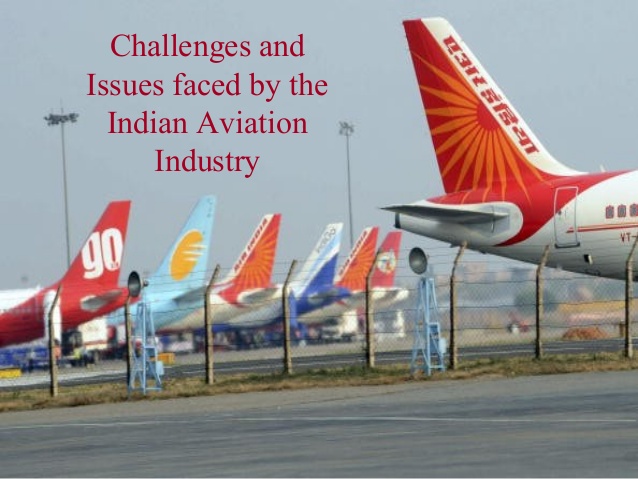Facts:
- The number of Indians flying are growing at about 20% a year.
- Indian domestic ATF is almost 50-60% costlier than in the U.S., the EU, West Asia and Asia-Pacific.
- Airfares in India are one of the lowest in the world on a rupee per seat-km basis.
Issues:
- Most domestic carriers are bleeding.
- Like in the past, high oil prices, currency fluctuations and lower yields have pushed airlines into a cyclical trap with at least two full-service airlines, Air India and Jet Airways, gasping for breath.
- Staff salary payments have been delayed and frantic efforts are on to raise fresh capital.
- Most airlines have cash balances equivalent to only 2-3 weeks of expenses.
- CAPA estimates Indian carriers will incur a combined loss of $1.9 billion this fiscal.
Structural challenges
- External factors such as oil prices and the exchange rate have contributed to headwinds.
- A number of long-term structural challenges are bogging the sector down.
- Slot constraints, insufficient parking bays and congestion at key airports, and high taxes on fuel are the main challenges.
Way Forward:
- A low phase like this is the time to take tough, transformational decisions on fleet, route network, service quality, organisational processes, culture and people.
- The stupendous growth in aviation has given a lot of taxes to the government.
- Fifty months of double-digit growth came on the back of huge investments by airlines and low fares. When crude prices fell to below $40 per barrel, the Centre increased the tax rates. Now that crude oil prices are hovering around $80 per barrel, it is a fit time for government intervention.
- Indian domestic ATF is almost 50-60% costlier than in the U.S., the EU, West Asia and Asia-Pacific. But airfares in India are one of the lowest in the world on a rupee per seat-km basis. This contradiction has to end.
